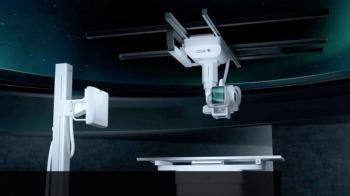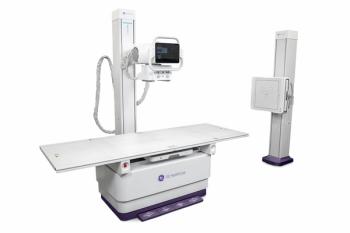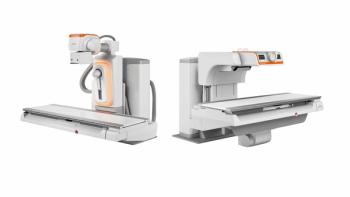
Agfa debuts small-footprint, high-performance CR reader
Agfa Healthcare extended its computed radiography portfolio with the global launch at RSNA 2009 of a compact, high-volume reader. Agfa also raised expectations among customers in the market for digital radiography systems with the unveiling of two works-in-progress built around flat-panel detectors.
Agfa Healthcare extended its computed radiography portfolio with the global launch at RSNA 2009 of a compact, high-volume reader. Agfa also raised expectations among customers in the market for digital radiography systems with the unveiling of two works-in-progress built around flat-panel detectors.
The company focused interest in CR on its next-generation DX-G, which offers a five-cassette drop-and-go buffer for feeding CR plates to the reader. These cassettes can be composed either of the less expensive standard phosphor imaging plates or of Agfa’s premium-performance DirectiX needle-based detector plates. DirectiX technology is made up of a crystal matrix that reduces light spread in the scintillator layer. This minimizes scatter and sharpens images.
The increased performance possible with the DirectiX plates is especially important when doing pediatric studies, according to Greg Cefalo, Agfa business manager for CR and DR in North America. Some neonates, for example, may need twice-daily radiographs for as long as a month. Cutting dose by as much as half, as can be done with the DirectiX plates, can make a big difference in the infants’ overall radiation dose, he said.
The DX-G is designed for neonatal and pediatric work but can also handle general radiology and extremity work. The currently available product is about as compact as the company’s single-plate reader, the DX-S, which entered the U.S. market about four years ago.
With its small footprint, the high-throughput DX-G can be fitted into out-of-the-way but accessible places in the x-ray department or even in the x-ray room itself. Very high volume facilities may consider installing several such units, Cefalo said.
“They can be networked so you can deploy them around different rooms,” he said.
The company’s two DR debuts, both works-in-progress, promise to boost productivity with nearly real-time previews and fast cycle times. Both the ceiling-/wall-mounted DX-D 500n (North America only) and single-detector U-arm DX-D 300 will be operated from Agfa’s NX user station.
An ergonomic design supports up to 125 exams daily on the DX-D 500n, the company’s new flagship DR system. The workflow focuses on a touchscreen built into the overhead tube crane. This touchscreen allows tableside control. It also displays a preview image within six seconds after triggering the shot from the NX user station. Images are processed using MUSICA2 software for display on diagnostic workstations. Final images are suited for archiving in a PACS.
The North American DR system introduction follows the unveiling of the DX-D 500 platform in March at the European Congress of Radiology. This system was first installed at two clinical sites, both in France, in October.
Agfa’s penetration of the x-ray market with CR has laid the groundwork for sales of its new DR systems, which may begin as early as January.
“We have a huge installed base and our customers tell us when they go to DR, they would like to have the NX and MUSICA2 available to process their DR images,” Cefalo said.
Newsletter
Stay at the forefront of radiology with the Diagnostic Imaging newsletter, delivering the latest news, clinical insights, and imaging advancements for today’s radiologists.




